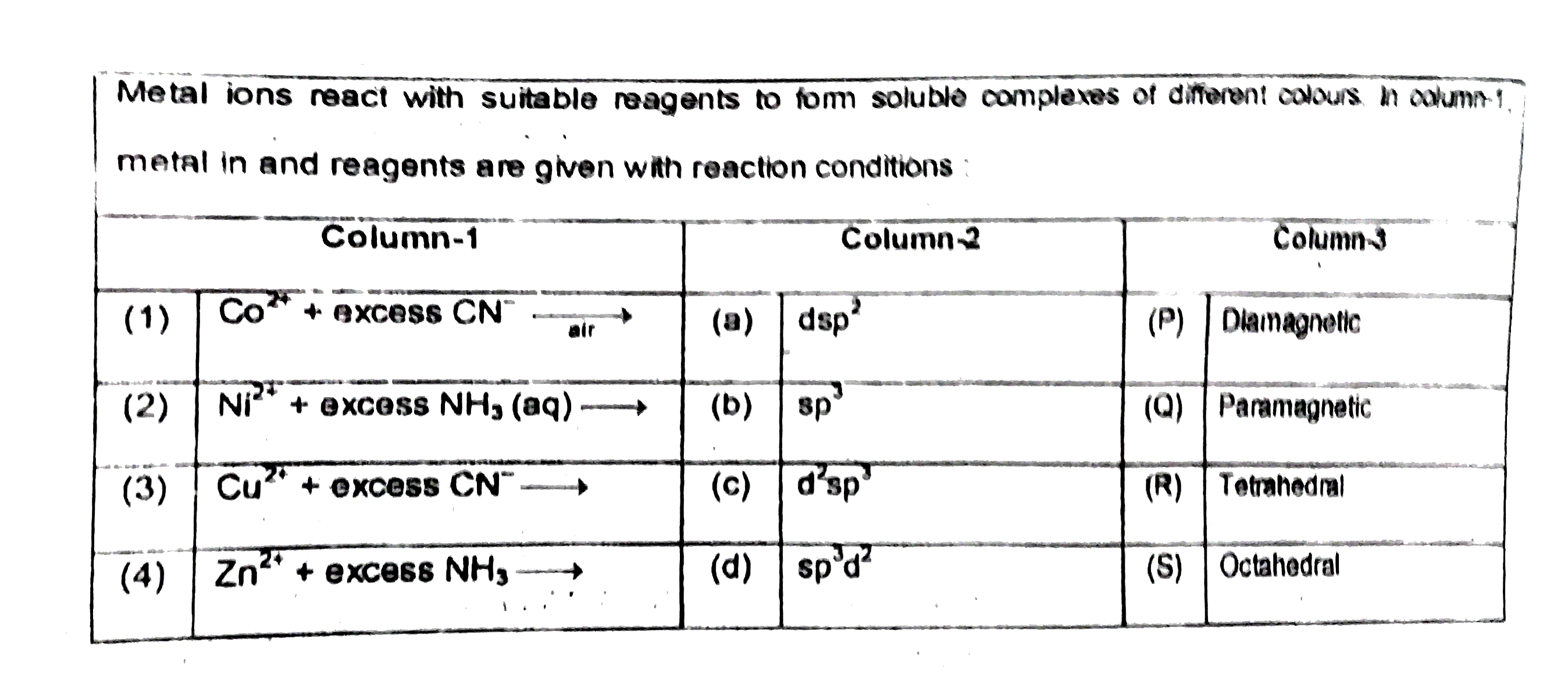When a metal of group 1 was dissolved in liquid ammonia, the following observations were obtained
(a) Blue solution was obtained initially.
On concentrating the solution, blue colour changed to bronze colour.How do you account for the blue colour of the solution? Given the name of the product formed on keeping the solution for some time.
Step-by-Step Solution:
1. Understanding the Reaction: When a Group 1 metal (let's denote it as M) is dissolved in liquid ammonia (NH3), a complex ion is formed. The reaction can be represented as:
M+nNH3→(M(NH3)n)++ammoniated electrons
Here, the metal ion forms a complex with ammonia molecules, and ammoniated electrons are also produced.
2. Blue Color Explanation: The initial blue color of the solution is due to the presence of ammoniated electrons. These electrons are free in the solution and can absorb certain wavelengths of light, leading to the characteristic deep blue color. The excitation and de-excitation of these electrons contribute to the observed color.
3. Concentration Change: Upon concentrating the solution, the blue color changes to bronze. This change occurs because, as the solution is concentrated, metal ion clusters begin to form. These clusters consist of multiple metal ions coming together, which alters the light absorption properties of the solution, resulting in a bronze color.
4. Product Formation Over Time: If the solution is allowed to stand for some time, a chemical change occurs. The ammoniated electrons react with ammonia to form an amide and hydrogen gas. The reaction can be represented as:
(M(NH3)n)+→MN2+H2
Here, the amide formed can be represented as MN2, indicating that the metal has reacted with ammonia to form a stable compound.
5. Final Summary:
- The blue color of the solution is due to ammoniated electrons.
- The bronze color observed upon concentration is due to the formation of metal ion clusters.
- The product formed after some time is an amide (e.g., MN2) along with the liberation of hydrogen gas.
---
M+nNH3→(M(NH3)n)++ammoniated electrons
Here, the metal ion forms a complex with ammonia molecules, and ammoniated electrons are also produced.
(M(NH3)n)+→MN2+H2
Here, the amide formed can be represented as MN2, indicating that the metal has reacted with ammonia to form a stable compound.
- The blue color of the solution is due to ammoniated electrons.
- The bronze color observed upon concentration is due to the formation of metal ion clusters.
- The product formed after some time is an amide (e.g., MN2) along with the liberation of hydrogen gas.
Topper's Solved these Questions
- THE S-BLOCK ELEMENTS BOOK - NCERT EXEMPLAR ENGLISHCHAPTER - THE S-BLOCK ELEMENTS EXERCISE - Assertion and Reason
2 Videos
- THE P-BLOCK ELEMENTSBOOK - NCERT EXEMPLAR ENGLISHCHAPTER - THE P-BLOCK ELEMENTSEXERCISE - Long Answer
9 Videos
- THERMODYNAMICSBOOK - NCERT EXEMPLAR ENGLISHCHAPTER - THERMODYNAMICSEXERCISE - Multiple choice questions
62 Videos
Similar Questions
Knowledge Check
When sodium is dissolved in liquid ammonia, a solution of deep blue colour is obtained. The colour of the solution is due to
Aammoniated electronBsodium ionCsodium amideDammoniated sodium ion
When alkali metal is dissolved in liquid NH3 the blue colour of the dilute solution changes to bronze colour due to
View SolutionA solution of sodium in liquid ammonia is blue in colour due to:
View SolutionSodium metal dissolves in liquid ammonia and forms a deep blue solution. The colour is due to absorption of light by :
View Solution
For a blue coloured solution obtained in column-2, select the only correct option.
View SolutionWhen NH4OH is added to copper sulphate solution, blue colour is obtained due to formation of
View SolutionWhich of the following complex(s) will have blue colour solution or ppt ?
View SolutionOn mixing aqueous solution of copper sulphate with aqueous solution of ammonia a deep blue coloured solution is obtained. Choose the correct options :
View Solution
